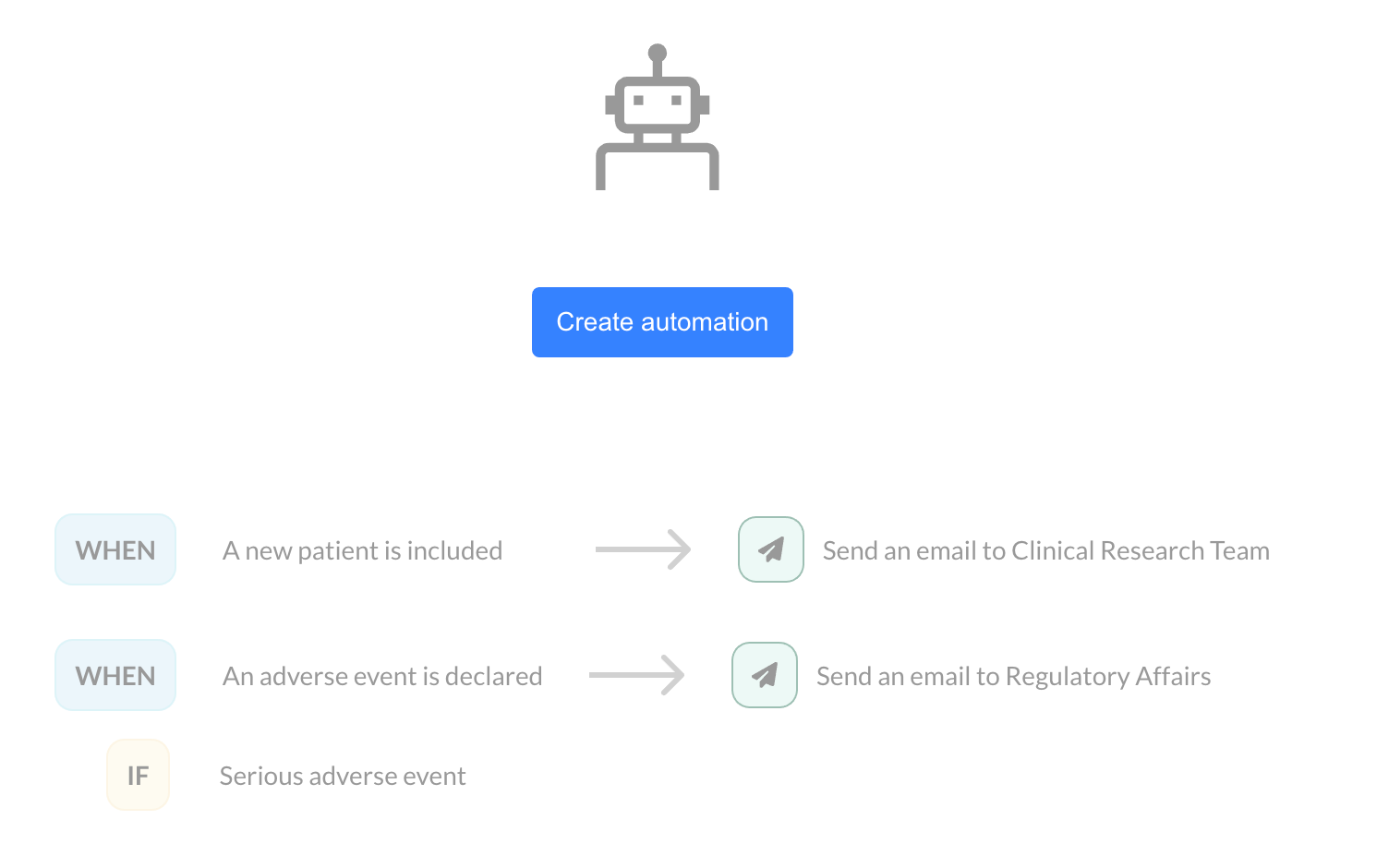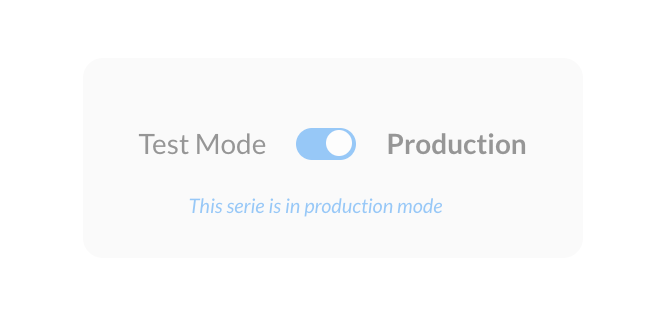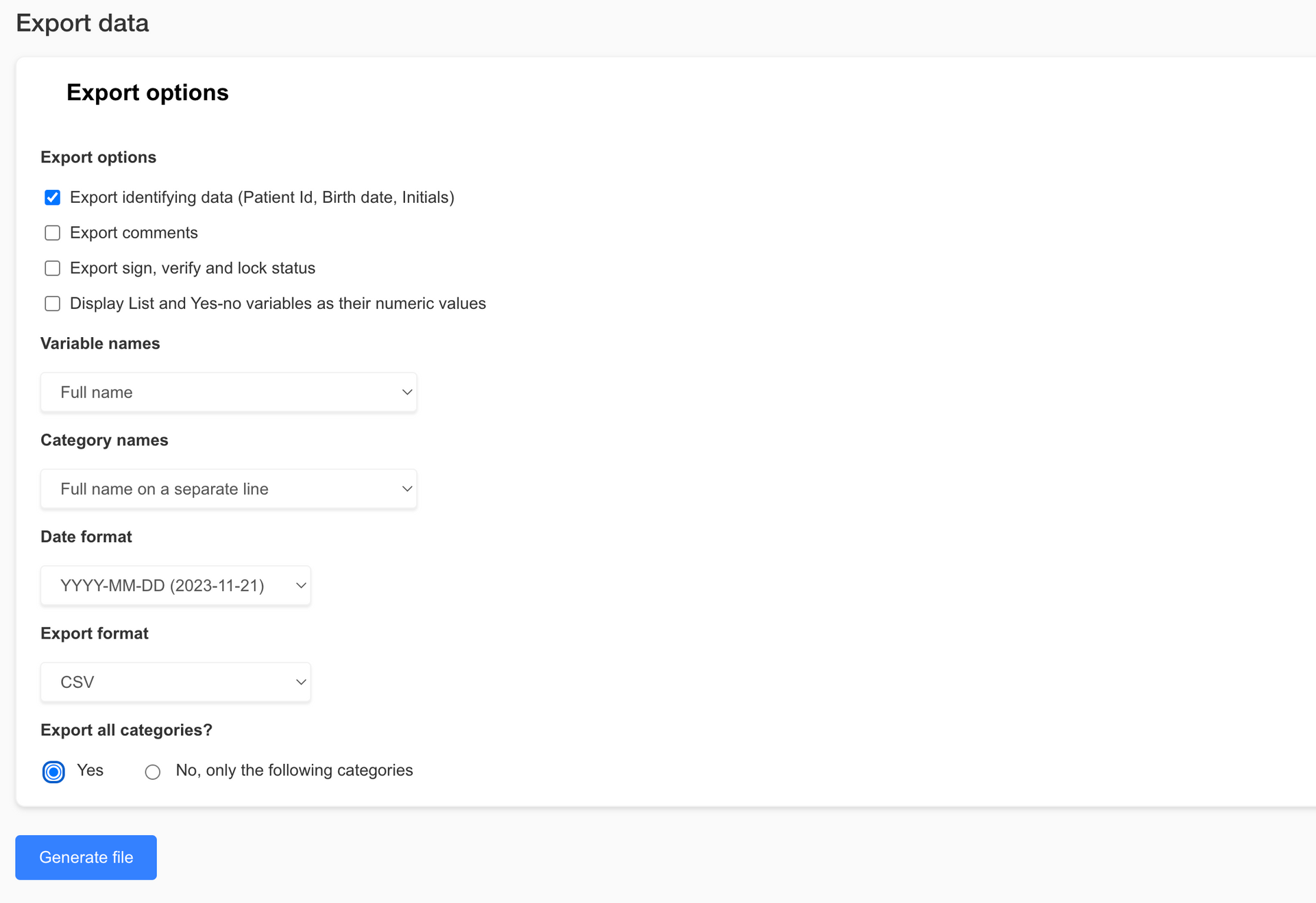Blog
Don't use templates for the CRF of your clinical investigation (PMCF study)!
Why can a CRF template be relevant for your clinical investigation?
The world of clinical research is complex and constantly evolving. The Case Report Form (CRF) plays a crucial role in this process. It is used to collect specific data in the context of your clinical investigation to test your research hypothesis. Given this complexity, it is tempting to resort to existing CRF templates to facilitate the task.
Indeed, they offer several advantages. A well-structured CRF template can help you define the data you need to collect, its format, and the timing of collection. It can provide a framework for investigator physicians, helping them to enter data in a consistent and structured way. CRF templates sometimes have the advantage of being already tested and proven, which can give some assurance of their validity.
Moreover,
CRF templates have the advantage of being generally well-structured and comprehensive, covering a wide range of information that may be relevant to a clinical study. By using a template, you could save time and avoid errors or omissions.
CRF templates are generally based on pharmaceutical clinical trials
But there is an inescapable reality: most CRF templates are designed from the pharmaceutical industry. These templates have been developed to adapt to clinical trials for the development of new drugs, which have different characteristics and requirements than medical devices.
In pharmaceutical clinical trials, data collection is focused on aspects such as drug interactions, side effects, dosage, and bioavailability. Therefore, these templates are structured to capture these types of data, which are not necessarily relevant for clinical investigations of medical devices.
Your needs are different from those of the pharmaceutical industry
When we talk about clinical investigations for medical devices, we are discussing a very different field from that of drugs. Medical devices encompass a wide range of products, from knee prostheses to smartphone applications. These products are not homogeneous, and their evaluation often involves very specific parameters that are not necessarily present in the pharmaceutical industry.
Moreover, the cost of developing a medical device is generally much lower than that of a drug. The average cost ratio is about 1:20. This implies that most medical devices are developed by small and medium-sized enterprises that do not have the same resources as large pharmaceutical companies. Medical device companies, therefore, need custom CRFs that are adapted to their specific needs and their more limited budget.
In addition, clinical investigations of medical devices tend to focus more on the performance of the product, its safety, and its effectiveness on a specific target population. Variables to consider include product wear, post-operative complications, long-term effectiveness, etc. These aspects are not always taken into account in CRF templates designed for drug trials.
Your needs are different from those of the pharmaceutical industry
When we talk about clinical investigations for medical devices, we are discussing a very different field from that of drugs. Medical devices encompass a wide range of products, from knee prostheses to smartphone applications. These products are not homogeneous, and their evaluation often involves very specific parameters that are not necessarily present in the pharmaceutical industry.
Moreover, the cost of developing a medical device is generally much lower than that of a drug. The average cost ratio is about 1:20. This implies that most medical devices are developed by small and medium-sized enterprises that do not have the same resources as large pharmaceutical companies. Medical device companies, therefore, need custom CRFs that are adapted to their specific needs and their more limited budget.
In addition, clinical investigations of medical devices tend to focus more on the performance of the product, its safety, and its effectiveness on a specific target population. Variables to consider include product wear, post-operative complications, long-term effectiveness, etc.
These aspects are not always taken into account in CRF templates designed for drug trials.
The risks of using a CRF template for a clinical investigation of a medical device
Using a CRF template intended for drug clinical trials for a clinical investigation on a medical device is not without risks. First, there is a risk that the template will not capture all relevant information. This lack of information can affect the quality and integrity of the collected data, and therefore the effectiveness of your investigation.
Moreover, there is also a risk of information overload. By using a CRF template designed for drug trials, you risk collecting data that is not relevant to your investigation, which can increase the cost and complexity of managing these data, or even lead to the withdrawal of investigators!
In addition, adapting a CRF template may require a significant investment of time and effort. And despite this investment, the result may still not be perfectly adapted to your specific needs.
Finally, using a CRF template can limit your flexibility. Each clinical investigation is unique and may require adjustments along the way. If you use a template, you may find yourself stuck in a format that does not allow you to adapt your CRF as you wish.
How to design your CRF for a clinical investigation?
It is therefore recommended to design your own CRF for your clinical investigations on medical devices. But how to proceed? Here are some recommendations.
First, start from your protocol: start by clearly defining your research objective.
Answer the following 3 questions:
- What is the purpose of the study?
- What are the secondary objectives?
- What is the study hypothesis?
If you can answer these 3 questions clearly and concisely, the necessary data to answer them will naturally follow.
Then, work closely with your research team, including doctors, statisticians, and data managers. Their expertise will help you define the variables to include in your CRF.
Also consider the ergonomics of your CRF. It must be easy to understand and fill out by the investigators. Good design can greatly improve the quality of collected data.
Finally, consider including data verification systems to minimize errors and omissions. These systems can take the form of automatic consistency checks or procedures for manual data review.
In conclusion, creating a custom CRF for your clinical investigation may require an investment in time and resources. However, this investment may prove beneficial in the long term, allowing you to collect high-quality data relevant to your research, and giving you the flexibility you need to carry out your investigation.
Need advice?
Have you written your Case Report Form and are looking for advice on its integration into an e-CRF? Contact us to discuss it. We would be happy to help.
LATEST POSTS






New Features in EasyMedStat: Custom Record ID (CRID) and Test/Production Modes [Product Update 3.36]


Let your friends know!



